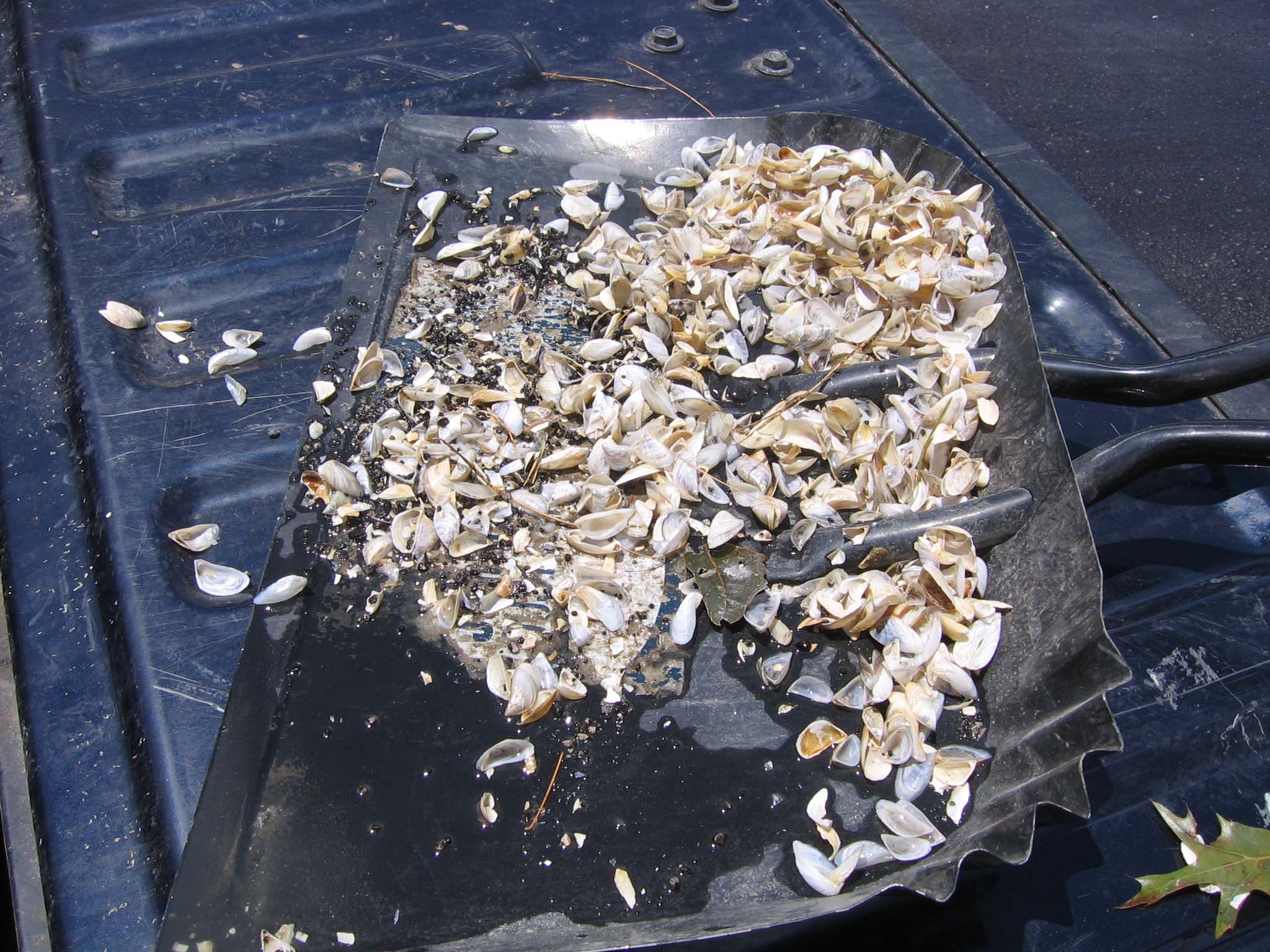
Xplor reconnects kids to nature and helps them find adventure in their own backyard. Free to residents of Missouri.


































Stay in Touch with MDC news, newsletters, events, and manage your subscription

Xplor reconnects kids to nature and helps them find adventure in their own backyard. Free to residents of Missouri.

A monthly publication about conservation in Missouri. Started in 1938, the printed magazine is free to residents of Missouri.




JEFFERSON CITY–A few extra precautions while boating and camping over the Memorial Day weekend will help save the places you love. That is the message from the Missouri Department of Conservation concerning invasive pests on land and water.
Missouri is on the front lines of battles to stop the spread of zebra mussels, emerald ash borers, and gypsy moths. None of these species is native to Missouri. All have the potential to damage Missouri’s economy and ecology.
AQUATIC INVADERS
So far, the zebra mussel is most widespread, having established beachheads in lakes or streams in 22 Missouri counties. This thumbnail-sized invader from Eurasia spreads mainly by hitching a ride on boats and other marine equipment.
Zebra mussels alter the ecology of waters they infest by competing with native fish and other animals for food. Their habit of attaching themselves to any solid object dooms native mussels, which are smothered by the invaders. Zebra mussels’ tiny larvae, called “veligers,” get inside marine engines, live wells, and water lines, requiring time-consuming maintenance and creating a danger of overheating. Large numbers of mussels attached to boat hulls increase water drag, leading to higher fuel costs. They also can weigh down docks, buoys, and other objects exposed to water.
Boaters are in the best position to prevent zebra mussels from spreading. Here are some tips for finding and getting rid of zebra mussels.
• Thoroughly inspect hulls, drive units, trim plates, transducers, and other submerged portions of boats for adult zebra mussels after each use. Adults are fingernail sized with dark and light stripes. Small zebra mussels give hard surfaces a sandpapery feel.
• Examine crevices and recessed areas around motor housings, trim tabs, and behind water intake screens on motors’ lower units.
• Check trailers, ropes, minnow buckets, and anything else that was in the water. Report any suspected zebra mussels to the nearest Conservation Department office.
• Remove all suspected zebra mussels, along with vegetation or other material clinging to boats, and trailers, and put it in a trash container away from water.
• Rinse boat bilges, trailers, motor drive units, and live wells before launching them in another location helps prevent transferring microscopic zebra mussel larvae. Use at least 104-degree water if live zebra mussels are found, or if your craft has been in waters known to be infested with zebra mussels. Most commercial car washes meet this standard.
• Allow boats, and other equipment to dry in the sun for at least five days after cleaning.
Zebra mussels are just one of several aquatic invasive species of concern in Missouri. Others that have been found here include the rusty crayfish, Asian carp, and Chinese mystery snail.
The Conservation Department urges anglers only use crayfish from the same body of water where they are fishing and never to release live bait. An invasion by a crayfish species that doesn’t belong in a particular lake or stream reduces the biological diversity of that area, making the natural community less stable and productive.
Crayfish don’t have to be far from their native areas to cause trouble. A crayfish species whose population is in balance with other species in its native waters can cause ecological problems when introduced to a neighboring watershed.
Bait-bucket releases are the most likely source of many aquatic invaders. Such introductions can be prevented by putting all unused live bait in trash bags and depositing them in trash receptacles away from water. Never release unused bait – whether it is fish, worms, crayfish, or anything else.
FOREST PESTS
The Conservation Department asks people who plan to camp over the Memorial Day weekend to buy firewood near their destination to avoid the chance of bringing a forest pest into their favorite camping area.
The gypsy moth and emerald ash borer both threaten trees in Missouri cities, suburbs, and rural areas. Vigilance by citizens and by state and federal agencies has so far prevented a widespread occurrence of gypsy moths here. However, in recent years, Missouri has experienced two occurrences of emerald ash borers. Forestry and agriculture officials are working to slow the spread of infestations that were discovered in Wayne County in 2008 and in Platte County last year.
Like many other invasive species, both the emerald ash borer and the gypsy moth often are spread by human activity. Because its larvae tunnel under tree bark, the emerald ash borer is easily spread by moving firewood from place to place. The infestation in Wayne County is centered on a campground, which strongly suggests campers’ firewood as the source.
Gypsy moths lay their eggs on almost any solid object. Their velvety, tan-colored egg masses have been found on firewood, campers, trailers, lawn furniture, and other outdoor equipment coming from infested areas to the north and east of Missouri.
If you camp outside Missouri, inspect your vehicles and equipment for gypsy moth eggs before returning home. Be especially careful not to move firewood out of Platte, Clay, Wayne, Carter, Iron, Madison, Reynolds, or Shannon counties. It also is a good idea to burn all firewood before leaving a campsite.
For more information about invasive species in Missouri, visit mdc.mo.gov/node/21445.
-Jim Low-